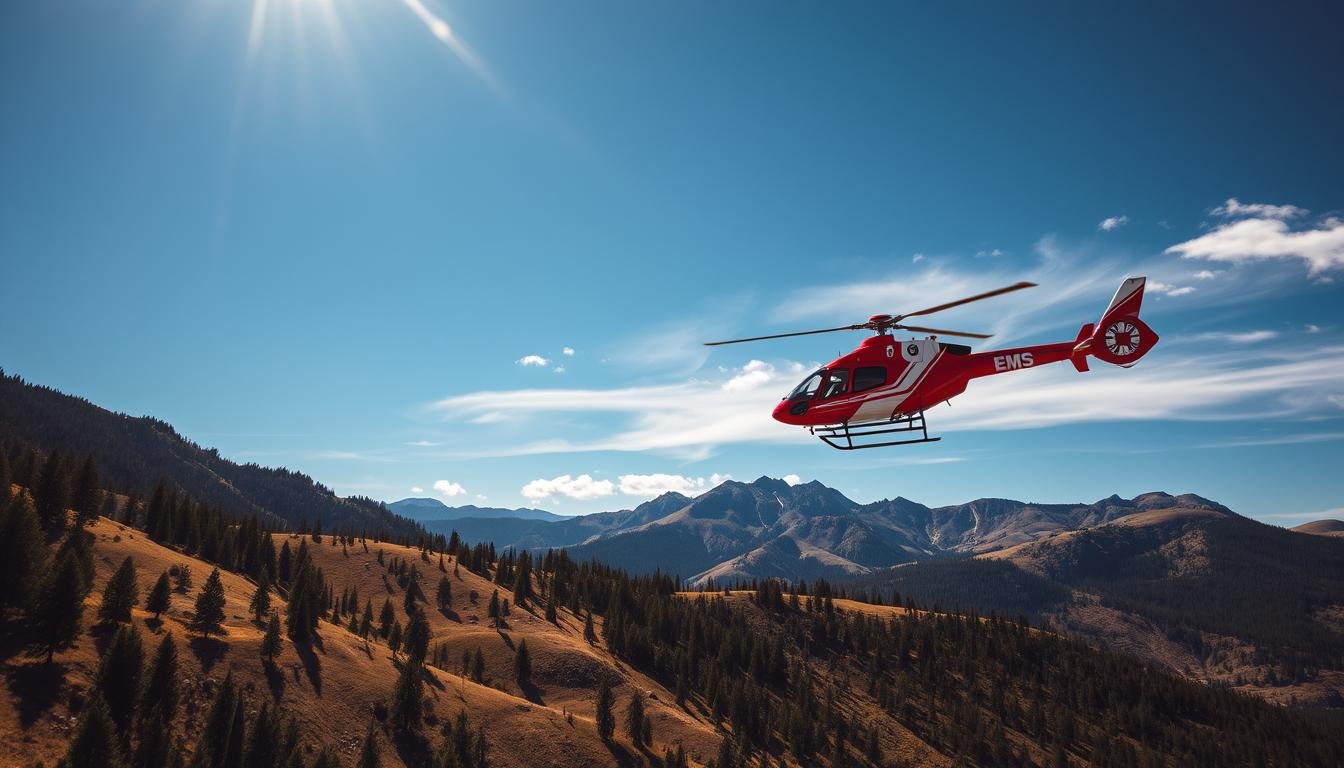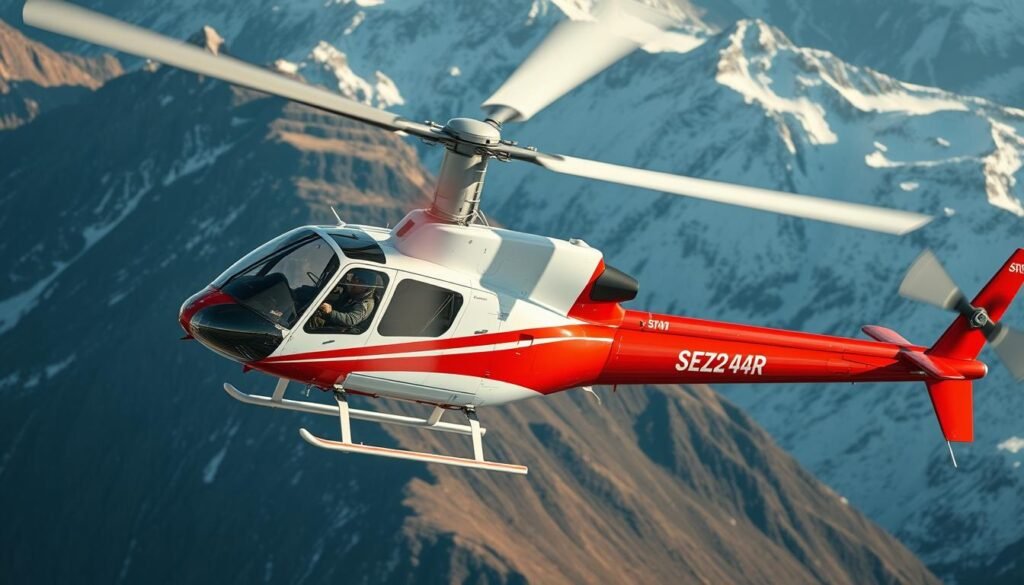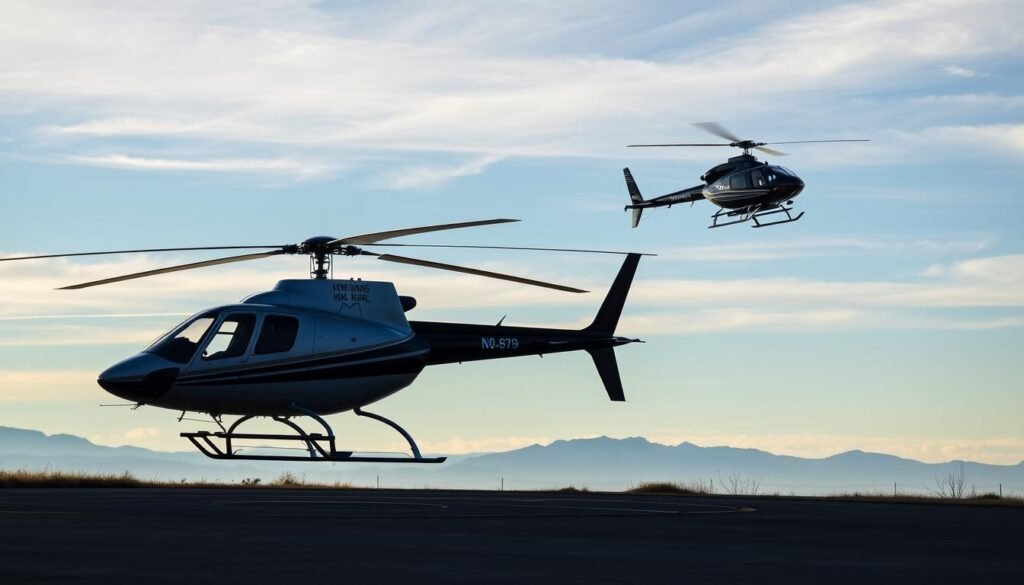Surprising fact: One regional air transport network can cut critical transfer time by over 40% across wide frontiers, changing survival odds for remote patients.
The frontier market offers a unique career mix where geography, weather, and long distances shape daily work. This guide frames why these locations present a compelling opportunity for clinical crew and pilots.
Readers will get clear, practical information on typical positions, expected dispatch patterns, and what hiring teams value in applicants. We outline how terrain and seasonal shifts influence sortie rates and base placement.
Expect a concise roadmap covering qualifications, training pathways, interview steps, and on-the-ground realities of this safety-first industry. Use this section as a quick entry point to decide if a remote air transport position fits your goals.
Key Takeaways
- Frontier air transport can significantly reduce transfer times and improve outcomes.
- Geography and weather drive mission types and base locations.
- Typical roles include clinical crew and pilots with high performance standards.
- Hiring focuses on critical care experience, adaptability, and team fit.
- The guide previews qualifications, training, and application steps for remote work.
Why EMS Helicopter Careers Thrive In Rural Montana, Wyoming, And Idaho
Frontier medical air services fill gaps where long roads and sparse hospitals slow critical care. Response corridors here drive demand for fast, coordinated emergency medical transport that shortens time to specialty treatment.
High-Need Service Areas And Response Times
Long distances and variable weather create clear service corridors. Helicopter availability directly affects response time for stroke, trauma, and cardiac emergencies.
High-Need Service Areas And Response Times In Frontier Environments
Ambulance crews stabilize patients on scene while flight teams expedite transfers to tertiary centers. This air and ground continuum is vital when minutes matter.
The Air And Ground Transport Continuum For Critically Ill Or Injured Patients
Clinicians provide advanced care en route—ventilatory support, vasoactive drips, and blood products—to keep ill injured patients stable during transfers.
Benefits, Career Growth, And Team Culture In The Flight Industry
Companies emphasize training, simulation, and wellness support. Staff move from base roles into education, safety, or leadership over years.
Diversity and equal opportunity strengthen teams. Learn more about workforce development in this sector through the aerospace workforce overview.
EMS Helicopter Jobs In Rural States: Montana, Wyoming & Idaho
Remote base roles demand pilots and clinicians who can adapt to shifting weather and sparse resources.
Montana: Flight Paramedic, Flight Nurse, And Helicopter Pilot Positions
Montana hiring often features flight paramedic, flight nurse, and helicopter pilot positions at hubs near critical access hospitals and main corridors. Expect rural scene responses and many interfacility transfers across wide areas.
Wyoming: Rural Base Operations, Safety-Focused Flight Crews, And On-Call Schedules
Wyoming base operations balance on-call and scheduled coverage to manage weather windows and crew duty limits. Crews follow conservative go/no-go rules and thorough preflight risk checks.
Idaho: Life Flight And Air Ambulance Roles Across Diverse Terrain
Idaho roles span plains, river canyons, and high passes. Pilots must manage density altitude; clinicians focus on trauma, medical, and neonatal interfacility care.
Typical Work Environment, Shifts, And Patient Care Responsibilities
Shifts commonly run 12–24 hours with set crew rest and base readiness duties. Tasks include aircraft checks, equipment QA, and outreach with referring departments.
Patient care centers on advanced assessment, airway control, ventilators, hemodynamics, and blood administration while coordinating with rural ED teams.

Salary, Benefits, And Location Considerations Across States
Salary varies by location, experience, and schedule complexity. Total pay often includes night/weekend differentials, flight pay, retirement match, and education stipends.
| Position | Typical Shift | Common Benefits |
|---|---|---|
| Flight Paramedic / Nurse | 12–24 hours | Medical leave, CE stipends, retirement match |
| Pilot | On-call / Scheduled | Flight pay, pay differentials, training allowances |
| Base Ops Support | Day shifts + on-call | Health benefits, travel reimburse |
Note: Crews routinely debrief missions to improve safety and communication. Candidates should expect probationary months of base orientation, aircraft training, and local geography familiarization.
For a closer look at pilot salary expectations and compensation stages, review the linked salary guide.
Qualifications, Training, And Skills Employers Seek Today
Recruiters now prioritize a blend of advanced clinical certifications and proven operational time in complex terrain. Candidates must show licensure aligned to role and verified high‑acuity experience.
Licensure, Years Of Experience, And Required Courses
Typical requirements include state RN or paramedic licensure plus documented critical‑care or high‑acuity field time. Required courses often list ACLS, PALS, NRP, and ITLS/PHTLS.
Programs frequently prefer FP‑C, CCP‑C, CFRN, or CTRN and may support students through exam prep and education benefits.
Safety Mindset, Crew Resource Management, And Ability To Work Under Pressure
A formal safety culture is non‑negotiable. Recurrent training emphasizes CRM, checklist discipline, sterile cockpit rules, and risk assessment.
- Training covers aircraft safety, survival, airway and ventilator care, hemodynamics, neonatal transport, and blood administration.
- Pilots must meet time minimums, mountain operations proficiency, and NVG/IFR familiarity where required.
- Months of supervised operations and route checks build local weather and terrain knowledge.
For a practical pathway overview and credential tips, see this guide on how to become a flight paramedic.

How To Apply And Succeed: Current Process, EEO, And Candidate Tips
Prepare a text-based resume and targeted cover note to avoid parsing delays and speed your application.
Start Your Application: Upload Or Email Your Resume And Cover Letter
Begin by uploading your resume and cover letter or reply to the automated message with attachments. Most systems will autofill core fields from your resume to save time.
Accepted File Types, Parsing Errors, And Troubleshooting Upload Issues
Accepted formats usually include .pdf, .doc, .docx, and .rtf. Remove images or fancy formatting to prevent errors.
If you see messages like “There was an error parsing data from your resume,” retry without parsing or manually enter your information. Use Dropbox or re-send the file if uploads fail.
Equal Employment Opportunity And Building Diverse, Inclusive Teams
Research the company’s EEO statement. Many providers commit to non‑discrimination and to recruiting diverse employees who respect different backgrounds.
Showcasing Patient Care Excellence, Flight Readiness, And Safety Commitment
Highlight months and years for licensure, recent training and courses, and quantified experience. Use the cover letter to show safety leadership and clear communication under pressure.
| Item | Common Error | Quick Fix |
|---|---|---|
| Resume File | Parsing failure or unsupported format | Save as .pdf or .docx, remove images, re-upload |
| Cover Letter | Not attached or wrong file name | Attach or paste text as cover_letter.txt, use clear filename |
| Mobile Submission | Reply without attachment or forwarded incorrectly | Forward email with attachment or reply from desktop |
Final Thoughts
A career on regional flight teams places high value on decisive skills and steady teamwork under pressure. This work blends clinical care and operational discipline to expand emergency medical service across wide areas.
Weigh salary and benefits against base location, shift rhythm, and the chance to build mountain and critical‑care experience over the year and years ahead.
Prepare clear application materials that show verified skills, mission alignment, and measurable outcomes. For broader context on related opportunities and compensation ranges for pilots, see the best industries for helicopter pilots.
With focused preparation and a safety-first mindset, you can find employment that advances your career while strengthening service to patients in remote areas.
FAQ
What positions are commonly available for air medical roles across Montana, Wyoming, and Idaho?
Typical openings include flight paramedic, flight nurse, and pilot roles. Employers also hire mechanics, operations coordinators, and base managers to support on-call service, maintenance, and dispatch in remote areas.
What qualifications and certifications do employers require for clinical flight roles?
Most clinicians must hold active paramedic or registered nurse licensure, advanced life support certifications such as ACLS and PALS, and current flight-specific training like FP-C or CFRN. Employers prefer several years of critical care or prehospital experience and completion of trauma and ventilator management courses.
How important is flight and safety training compared to clinical experience?
Both are critical. Clinical expertise ensures high-quality patient care, while aviation and safety training—crew resource management, hoist and wire operations, and survival procedures—keep crews and patients safe during transport in challenging terrain.
What kind of schedule and work environment should candidates expect in rural bases?
Expect rotating on-call shifts, extended standby periods, and rapid responses at varied hours. Bases operate in austere environments with temperature extremes, high elevations, and long distances, requiring physical readiness and adaptability.
How do air and ground services coordinate for critically ill or injured patients?
Agencies follow a transport continuum that includes triage, ground ambulance stabilization, and timely transfer to air teams when speed or specialized care is needed. Clear communication, shared protocols, and mutual aid agreements streamline patient handoffs across services.
What salary ranges and benefits are typical for these roles in frontier regions?
Compensation varies by role, experience, and employer but often includes competitive pay, health insurance, retirement plans, paid training, and recruitment incentives for relocation. Pilots and senior clinicians command higher wages, and some employers offer sign-on bonuses.
Are there recurring training and continuing education requirements once hired?
Yes. Crews complete recurrent flight checks, simulation drills, and clinical refreshers. Employers commonly require periodic recertification in advanced airway management, pediatric care, trauma protocols, and emergency procedures.
What documents and file types are accepted when applying online?
Applications usually accept PDF and DOCX resumes and cover letters. Some portals also take image files for credentials. If a parsing error occurs, submit documents as a flattened PDF or email attachments as instructed by the hiring team.
How can applicants demonstrate readiness and stand out during the hiring process?
Highlight measurable clinical outcomes, flight or alpine experience, safety-oriented training, and examples of teamwork under pressure. Provide complete licensure details, current certifications, and references who can attest to patient care and decision-making in emergencies.
What should candidates know about equal employment opportunity and diversity policies?
Most operators adhere to EEO guidelines and actively recruit diverse applicants. They evaluate candidates by qualifications, safety record, and experience. Applicants with nontraditional backgrounds or transferable skills are encouraged to apply.
How long does the hiring process typically take from application to start date?
Timeline depends on credentialing, background checks, and training schedules. Expect several weeks to a few months. Faster starts occur when candidates already hold required certifications and complete employer onboarding promptly.
Are there opportunities for career growth and cross-training within these agencies?
Yes. Organizations frequently promote from within to supervisory, training, and operations roles. Cross-training in critical care specialties, safety management, and maintenance allows clinicians and pilots to expand responsibilities and advance their careers.
What physical and mental demands should applicants anticipate?
Roles require stamina for patient handling, work at altitude, and rapid transitions. Crews must manage stress during high-acuity transports, maintain situational awareness, and commit to ongoing safety practices to protect patients and staff.
How do employers handle licensing across state lines for multi-state operations?
Many services maintain multi-state privileges, require state-specific licensure or compact agreements, and support clinicians through the credentialing process. Expect verification of licenses and possibly additional state registrations.
Can students or less-experienced clinicians find entry pathways into this field?
Entry often requires several years of clinical or EMS experience, but internship programs, reservist positions, and ground transport roles can build the necessary skills. Pursuing advanced certifications and seeking mentorship accelerates readiness for flight roles.
erve response capacity across regions.



